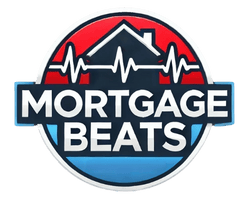The Fundamental Purpose of Mortgage Insurance
Mortgage insurance exists to mitigate risk for lenders when borrowers make down payments below 20% of a home’s purchase price. By transferring some default risk to insurers, lenders can offer loans with lower down payment requirements while maintaining acceptable risk levels. This system has significantly expanded homeownership opportunities, particularly for first-time buyers who haven’t accumulated substantial savings but demonstrate strong repayment capacity through income and credit history.
From a borrower’s perspective, mortgage insurance represents both an additional cost and a valuable tool for earlier home entry. While the premiums increase monthly housing expenses, they enable purchasers to buy homes years sooner than waiting to save 20% down payments, potentially benefiting from property appreciation during that time. The insurance also allows borrowers to preserve more cash for emergencies, home improvements, or other investments rather than tying it all up in home equity immediately.
NorCal Real Estate & Financial Services educates clients about this risk-sharing ecosystem and how it affects their loan options. Our advisors explain how mortgage insurance interacts with other loan features to help borrowers evaluate whether paying premiums makes financial sense compared to alternative strategies like waiting to save larger down payments or exploring low-down-payment programs without traditional insurance requirements.
Private Mortgage Insurance (PMI) for Conventional Loans
Private Mortgage Insurance (PMI) applies to conventional loans backed by Fannie Mae and Freddie Mac when the down payment falls below 20%. Unlike government-backed mortgage insurance programs, PMI is provided by private insurance companies approved by lenders. Premium costs vary based on loan-to-value ratio, credit score, and loan term, typically ranging from 0.5% to 1.5% of the loan amount annually. Borrowers with higher credit scores and larger down payments generally qualify for lower PMI rates.
PMI offers more cancellation flexibility than government mortgage insurance programs. Once the loan balance reaches 78% of the original property value through natural amortization, PMI automatically terminates. Borrowers can request cancellation at 80% loan-to-value if they’ve made sufficient payments to reach that threshold or if property value increases through appreciation. Some lenders require a new appraisal to confirm current value when requesting early cancellation based on home price increases.
At NorCal Real Estate & Financial Services, we help conventional loan borrowers understand their PMI options and rights. Our advisors explain how different down payment amounts affect PMI costs and duration, allowing clients to make informed trade-offs between upfront cash requirements and ongoing insurance expenses. We also guide clients through PMI cancellation processes when they become eligible to eliminate these premiums.
FHA Mortgage Insurance Premium (MIP) Requirements
FHA loans require both upfront and annual Mortgage Insurance Premiums (MIP) regardless of down payment amount, distinguishing them from conventional PMI which disappears at higher equity levels. The upfront MIP equals 1.75% of the base loan amount, typically financed into the total loan rather than paid out-of-pocket at closing. Annual premiums range from 0.45% to 1.05% depending on loan term, amount, and loan-to-value ratio, divided into monthly payments.
Most FHA borrowers face MIP for the entire loan term unless they made a down payment of 10% or more—in which case MIP lasts for 11 years. This long-duration requirement makes FHA loans potentially more expensive over time compared to conventional loans with cancellable PMI, despite FHA’s more lenient credit requirements. The FHA periodically adjusts MIP rates, so current borrowers may have different premium structures than those who obtained loans in previous years.
NorCal Real Estate & Financial Services helps clients evaluate whether FHA’s lower down payment requirements justify its long-term mortgage insurance costs compared to conventional alternatives. Our advisors analyze how different loan programs would perform over various time horizons, helping borrowers select the most cost-effective path based on their anticipated tenure in the home and financial growth projections.
VA Loan Funding Fees Explained
VA loans utilize a unique funding fee structure rather than traditional mortgage insurance, even for borrowers making no down payment. This one-time fee ranges from 1.25% to 3.3% of the loan amount depending on service category, down payment percentage, and whether it’s the borrower’s first VA loan use. Disabled veterans and surviving spouses may qualify for full or partial fee waivers in recognition of their service-connected sacrifices.
Unlike recurring mortgage insurance premiums, the VA funding fee is typically financed into the loan amount rather than paid monthly. This structure keeps ongoing housing costs lower but increases the total loan balance slightly. The fee helps sustain the VA loan program by offsetting taxpayer costs, allowing the program to continue offering favorable terms like no down payment requirements and competitive interest rates to qualified military borrowers.
NorCal Real Estate & Financial Services specializes in helping veterans and active-duty personnel navigate VA loan benefits. Our advisors explain funding fee structures and exceptions, helping military families determine whether paying the fee upfront or financing it makes more sense for their situations. We also explore potential refinancing options to remove funding fees when borrowers transition from other loan types to VA financing.
USDA Rural Development Guarantee Fees
USDA loans feature both upfront and annual guarantee fees that function similarly to mortgage insurance, despite the program’s official “no mortgage insurance” claim. The upfront fee equals 1% of the loan amount, while the annual fee runs 0.35% of the remaining principal balance. Like FHA’s upfront MIP, the USDA’s initial guarantee fee typically gets rolled into the loan rather than requiring cash payment at closing.
These fees help fund the USDA Rural Development program that provides 100% financing for eligible properties in designated rural areas. Income limits apply to ensure the program serves its intended audience of moderate-income buyers in less densely populated regions. The USDA periodically adjusts its fee structure, so current borrowers may encounter different costs than previous participants in the program.
At NorCal Real Estate & Financial Services, we help clients evaluate whether USDA loans represent the most cost-effective option for rural property purchases. Our advisors compare USDA guarantee fees against conventional PMI or FHA MIP costs for similar loan scenarios, ensuring borrowers select programs that best match their property locations, income levels, and long-term financial plans.
How Mortgage Insurance Premiums Are Calculated
Mortgage insurance costs depend on multiple risk factors that insurers use to predict likelihood of default. Loan-to-value ratio (LTV) serves as the primary pricing variable—the higher the LTV (meaning smaller down payment), the higher the perceived risk and subsequent premium. Credit scores also significantly impact PMI pricing on conventional loans, with borrowers above 740 often receiving the most favorable rates. Loan term, property type, and even state of residence can influence final insurance costs.
Government-backed mortgage insurance programs like FHA MIP use standardized pricing based primarily on LTV and loan term, with less credit score sensitivity than private insurers. However, FHA does implement “life of loan” premium requirements for most borrowers to account for the program’s more lenient underwriting standards. Understanding these calculation methods helps borrowers estimate true loan costs when comparing different down payment scenarios.
NorCal Real Estate & Financial Services provides clients with detailed mortgage insurance estimates as part of comprehensive loan comparisons. Our advisors explain how different down payment amounts or credit score improvements could reduce insurance costs and help borrowers evaluate whether paying points to lower rates or applying those funds toward larger down payments would yield better long-term savings when considering mortgage insurance implications.
Payment Options: Monthly, Upfront, and Split Premiums
Borrowers typically encounter three main mortgage insurance payment structures. Monthly premiums represent the most common approach, adding a set amount to each mortgage payment until the insurance requirement ends. Upfront premiums paid at closing (or financed into the loan) can sometimes reduce or eliminate monthly payments, while split-premium options combine both approaches for balanced cash flow management.
Lender-paid mortgage insurance (LPMI) offers an alternative where the lender covers the insurance cost in exchange for a slightly higher interest rate. This structure can benefit borrowers who won’t reach 20% equity quickly or who prefer consistent payments rather than eventual PMI cancellation. However, unlike traditional PMI, LPMI costs continue for the full loan term regardless of equity accumulation, making long-term cost comparisons essential.
NorCal Real Estate & Financial Services helps clients analyze which payment structure aligns best with their financial situations and homeownership timelines. We compare total costs across all options, considering factors like anticipated time in the home, potential for property appreciation, and opportunities for future refinancing. This comprehensive analysis ensures borrowers select mortgage insurance approaches that optimize both short-term affordability and long-term value.
Cancellation and Removal of Mortgage Insurance
Understanding mortgage insurance termination policies helps borrowers plan equity-building strategies. Conventional loan PMI automatically cancels at 78% loan-to-value based on the original amortization schedule, while borrowers can request removal at 80% LTV through payments or appreciation. FHA loans generally require refinancing to conventional loans to eliminate MIP unless the original down payment exceeded 10%, in which case MIP drops after 11 years.
Appreciation-based cancellation requires formal valuation proof, typically through a new appraisal costing $500-$700. Some lenders accept alternative valuation methods like broker price opinions for lower costs. Borrowers must also demonstrate good payment history and certify that no subordinate liens exist on the property. These requirements ensure lenders maintain adequate protection until statutory cancellation points are reached.
NorCal Real Estate & Financial Services proactively monitors clients’ mortgage insurance eligibility, alerting them when cancellation opportunities arise. Our advisors guide borrowers through the necessary steps to remove premiums, whether through traditional amortization, appreciation documentation, or strategic refinancing into non-MI-required loans. This ongoing service helps homeowners reduce housing costs as soon as they qualify.
Comparing Mortgage Insurance Across Loan Programs
Side-by-side comparisons reveal significant cost differences between mortgage insurance options. FHA loans often prove cheaper initially but more expensive long-term due to life-of-loan MIP requirements for most borrowers. Conventional PMI typically costs more upfront but offers cancellation flexibility that can save thousands over time. VA loans avoid monthly premiums entirely but charge upfront funding fees, while USDA loans blend both upfront and annual charges at relatively low rates.
The optimal program depends on individual circumstances including credit score, down payment amount, military service status, property location, and expected time in the home. Borrowers planning to sell or refinance within a few years might prefer FHA’s lower initial costs, while those committing to long-term ownership may benefit more from conventional PMI’s cancellation potential. First-time buyers should particularly consider how mortgage insurance choices affect their future refinancing options.
At NorCal Real Estate & Financial Services, we provide detailed cross-program comparisons that account for mortgage insurance differences. Our advisors model various scenarios showing how each option performs over different time horizons, helping borrowers select programs that align with both their immediate needs and long-term financial strategies. This analytical approach prevents unpleasant surprises about ongoing housing costs down the road.
Strategies to Minimize or Avoid Mortgage Insurance Costs
Several approaches can reduce or eliminate mortgage insurance requirements without waiting years to save a 20% down payment. Piggyback loans (80-10-10 structures) use a second mortgage to cover part of the down payment, avoiding PMI while often providing tax-deductible interest. Rapid principal payments through biweekly payments or extra principal contributions can accelerate equity building to reach cancellation thresholds faster.
Timing purchases to leverage natural appreciation in rising markets may help borrowers reach 20% equity sooner through market gains rather than just principal reduction. Some credit unions and portfolio lenders offer conventional loans with lender-paid MI or single-premium options that can prove cheaper than traditional monthly PMI. First-time buyer programs sometimes provide grants or second mortgages that effectively eliminate mortgage insurance needs.
NorCal Real Estate & Financial Services specializes in developing customized strategies to minimize mortgage insurance costs for our clients. Our advisors analyze all available options based on your specific financial profile, local market conditions, and homeownership goals. Whether through creative financing structures, accelerated equity building, or optimal program selection, we help borrowers achieve homeownership with the most favorable insurance terms available.
Conclusion
Mortgage insurance plays a vital but often misunderstood role in modern home financing, enabling millions of buyers to purchase homes with smaller down payments while protecting lenders against default risks. From conventional PMI to FHA MIP and VA funding fees, each program features unique cost structures, duration requirements, and cancellation policies that significantly impact overall loan affordability. Smart borrowers educate themselves about these differences to select the most cost-effective options for their situations.
At NorCal Real Estate & Financial Services, we demystify mortgage insurance to empower clients with knowledge for better decision-making. Our team explains complex insurance terms in clear language, provides accurate cost projections across all loan programs, and develops strategies to minimize unnecessary insurance expenses. We view mortgage insurance, as one component of comprehensive home financing that requires careful consideration alongside interest rates, fees, and loan terms.
If you are considering a home purchase or refinance and want expert guidance on navigating mortgage insurance options, contact NorCal Real Estate & Financial Services today. Our mortgage professionals will analyze your unique situation, explain all available alternatives, and help you secure financing that balances upfront affordability with long-term value. With the right information and strategic approach, you can leverage mortgage insurance as a tool for achieving homeownership goals while maintaining financial flexibility for the future.
Ready To Get The Best Financial Advise, Email us at: Chris@mortgagebeats.com



